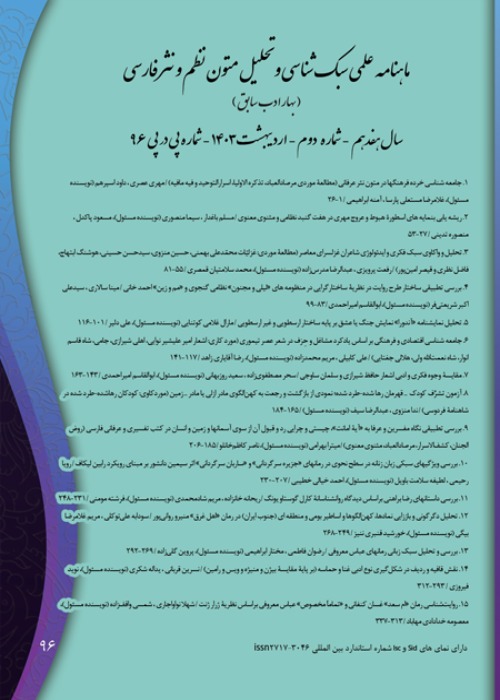Department of Persian Language and Literature, Faculty of Literature and Humanities, Salman Farsi University of Kazerun, Kazerun, Iran
According to the most ancient ideas and beliefs, each of the manifestations of nature has become a god. Wind, as one of the important elements of existence, has occupied a relatively large part of ancient Iranian beliefs and myths, and these beliefs have been reflected in our culture and literature. According to Taylor"s school of animism and its connection with myth, animism and mute human being seen in the literary realm can be interpreted in the ancient intellectual-philosophical framework and is not a poetic idea created by the poet"s mind. Also, according to Max Müller"s comparative school, the first religious concepts originated from personalizing natural phenomena. The purpose of this research is to correctly and precisely understand the function of the myth of wind in the depictions of poets of the Khorasani style and to better understand the poetry of these poets.
The present article was done in a descriptive-analytical way using library tools. Considering the wide range of Khorasani style poems, the works of some of the most prominent poets of this style have been examined.
According to this research, the function of the wind element in mythology and Khorasani style poems is divided into two categories, negative and positive, and all the characteristics can be interpreted and explained based on Taylor"s animistic view and Müller"s comparative school. Among others, we can mention the positive characteristics of "wind being the god of war", "its connection with life and soul", "giving life and creating beauty" as well as "movement and dynamism" of the wind. The negative functions of the myth of the wind include "destruction and destructiveness", "being cold and deadly".
What is depicted in Persian poems, especially in Khorasani style poems - which are closer to pre-Islamic Iranian beliefs than other periods of Persian poetry - are rooted in mythological beliefs and thoughts that affect the mind. And the unconscious mind of the poets has played a role, and this issue is completely related to the two points of view, and the more we have moved away from this period, in our opinion, these images have become a literary tradition and traces of the beliefs and functions of the myth. This element has become less prominent in our perception of these poems.
myth , wind , Khorasani style , animism , spirit
- حق عضویت دریافتی صرف حمایت از نشریات عضو و نگهداری، تکمیل و توسعه مگیران میشود.
- پرداخت حق اشتراک و دانلود مقالات اجازه بازنشر آن در سایر رسانههای چاپی و دیجیتال را به کاربر نمیدهد.



